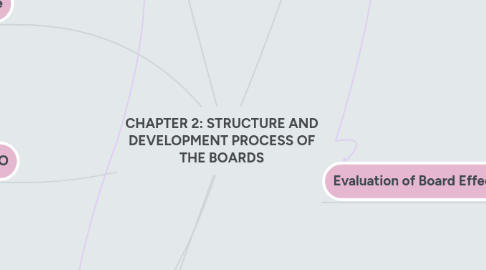
1. Financial Reporting Council’s Guidance on Board Effectiveness stated that: ‘An effective board develops and promotes its collective vision of the company’s purpose, its culture, its values and the behaviors it wishes to promote in conducting its business.
2. Sec 2 of CA 2016:Director includes any person occupying the position of director of a corporation by whatever name called and includes : a person in accordance with whose directions or instructions the majority of directors of a corporation are accustomed to act and; an alternate or substitute director.
3. Categories of Directors:
3.1. Executive director
3.2. Managing director
3.3. Non-Executive director
3.4. Independent director
3.5. Alternate director
3.6. Associate director
4. Board structure
4.1. unitary
4.1.1. single board
4.1.1.1. executive director
4.1.1.1.1. NEDs
4.2. two tier (dual)
4.2.1. two boards
4.2.1.1. management board (lower tier)
4.2.1.1.1. supervisory board ( upper tier
5. Splitting the role of chairman & CEO
5.1. CHAIRMAN
5.1.1. Ensure that the board sets and implements the company’s direction and strategy effectively, and
5.1.2. Act as the company’s lead representative, explaining aims and policies to the shareholders.
5.2. CEO
5.2.1. Take responsibility for the performance of the company, as determined by the board’s strategy
5.2.2. Report to the chairman and/or board of directors
6. Board Commitee
6.1. The Listing Requirements has made compulsory for all public listed companies to establish an audit committee and nomination committee..
6.1.1. Audit commitee
6.1.2. Remuneration committee
6.1.3. Risk commitee
7. Directors development and succession planning
7.1. A director of a listed issuer must ensure that he attends such training programmed as may be prescribed by the Exchange from time to time. continuous training for directors of listed issuers as important to enable the directors to effectively discharge their duties.
7.1.1. Nomination committee
7.2. Mandatory Accreditation Programme (MAP)
7.2.1. A Director must attend the MAP in full and procure a certificate from the Approved Organiser to confirm his completion of the MAP.
7.2.2. A Director must complete the MAP within the time set
7.2.3. Within 4 months from the date of appointment
8. DIRECTOR SELECTION PROCESS
8.1. Integrity and Judgement
8.2. Knowledge
8.3. Diversity
8.4. Commitment
8.5. Independent judgement
8.6. Performance and Contribution
8.7. Experience and Accomplishments
8.8. Board Interaction
9. DIRECTOR REMUNERATION
9.1. Payment or compensation received for services or employment and includes base salary, any bonuses and any other economic benefits that an employee or executive receives during employment
9.2. remuneration of executive director
9.2.1. basic salary
9.2.2. pension
9.2.3. benefit in-kind
9.2.4. performance related
9.2.4.1. bonus
9.2.4.2. share options
9.3. remuneration of non-executive director
9.3.1. The remuneration of non-executive directors is decided by the board, or where required by the article of association, or the shareholders in general meeting.
9.3.2. NED remuneration consist of a basic fee – no performance related element is awarded.
10. Evaluation of Board Effectiveness
10.1. CG Guide Bursa Malaysia
10.1.1. proactively participate in strategic decisions
10.1.2. challenge management with questions based on informed knowledge
10.1.3. oversee management’s plans, decisions, and actions
10.1.4. monitor management’s ethical conduct, financial reporting and regulatory compliance
10.1.5. be capable of effectively achieving good governance and protecting stakeholders’ interests
10.2. Barriers To Board Effectiveness
10.2.1. Avoid micro-management
10.2.2. Ineffective nomination committee
10.2.3. No plan for rotation of board members
10.2.4. Board size is too small
10.3. Board Evaluation and Performance
10.3.1. The board should undertake a formal and rigorous annual evaluation of its own performance and that of its committees and individual directors
10.3.2. Some of the generally accepted benchmarks for the entire board evaluation are:
10.3.2.1. Fulfillment of oversight functions
10.3.2.2. Transparency and accountability
10.3.2.3. Overseeing of conflicts of interest

